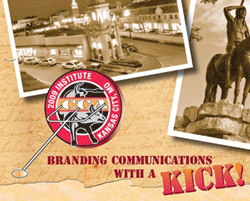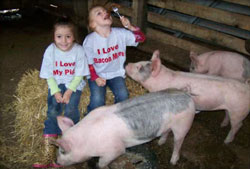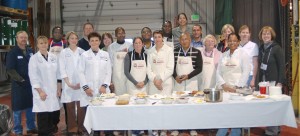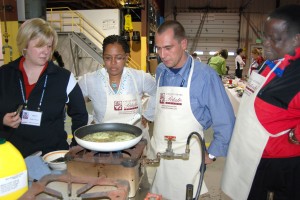 Have you heard of The Hand That Feeds U.S. program? This is an educational resource for urban media on the importance of U.S. agriculture to the security and future of our country. The project provides information relevant to our nation’s farming industry, while also seeking to combat the current misinformation campaigns about food prices and renewable fuels.
Have you heard of The Hand That Feeds U.S. program? This is an educational resource for urban media on the importance of U.S. agriculture to the security and future of our country. The project provides information relevant to our nation’s farming industry, while also seeking to combat the current misinformation campaigns about food prices and renewable fuels.
Columnist Jerry Lackey at GO San Angelo wrote an article, Farmers’ contribution to U.S. topic of awareness campaign, that discusses the benefits of The Hand That Feeds U.S. and how it can help politicians understand the impact regulations have on the agriculture industry and ultimately, our nation’s food supply.
In an open letter to U.S. media outlets, Senate Budget Committee Chairman Kent Conrad, D-N.D.; and ranking member of the Senate Agriculture Committee Saxby Chambliss, R-Ga., urged reporters to take the time to learn more about U.S. farm policy and the farm and ranch families that keep America fed.
Unbiased information is needed now more than ever because at no time in our history has the general population been less connected to the farm, the senators said as they endorsed newly launched educational efforts dubbed “The Hand That Feeds U.S.”
Based on the recently published U.S. Census of Agriculture, just more than 2 million people in our nation of about 300 million are classified as farmers, with far fewer still making a living off of the land and meeting the lion’s share of the food and fiber needs of our country.

 Here’s a reminder about the 2009 CCA Institute. It’s not too late to register according to Terri Breon.
Here’s a reminder about the 2009 CCA Institute. It’s not too late to register according to Terri Breon. The latest news from
The latest news from 
 I don’t know if Larry Quinn is ready to rename the Broadcasters Letter, the New Media Letter, but new media is slowly but surely making its way into the
I don’t know if Larry Quinn is ready to rename the Broadcasters Letter, the New Media Letter, but new media is slowly but surely making its way into the  The mission of the Office of Communications is to provide leadership, expertise, counsel and coordination for the development of communications strategies which are vital to the overall formulation, awareness and acceptance of U.S. Department of Agriculture programs and policies, and serves as the principal USDA contact point for the dissemination of consistent, timely information.
The mission of the Office of Communications is to provide leadership, expertise, counsel and coordination for the development of communications strategies which are vital to the overall formulation, awareness and acceptance of U.S. Department of Agriculture programs and policies, and serves as the principal USDA contact point for the dissemination of consistent, timely information. 

 ZimmComm client,
ZimmComm client, 
 The United States Potato Board (USPB) recently met to introduce new ideas about dehydrated potatoes. Guests learned the nutritional facts, planting, production, harvesting, storing and processing. Eight international guests from four private voluntary organizations (PVOs) and two guests from US PVO headquarters attended the USPB Dehydrated Potato Workshop. Among the PVOs participating this year were Africare, Catholic Relief Services (CRS), the International Partnership for Human Development (IPHD), Joint Aid Management (JAM), and the Adventist Development Relief Agency (ADRA).
The United States Potato Board (USPB) recently met to introduce new ideas about dehydrated potatoes. Guests learned the nutritional facts, planting, production, harvesting, storing and processing. Eight international guests from four private voluntary organizations (PVOs) and two guests from US PVO headquarters attended the USPB Dehydrated Potato Workshop. Among the PVOs participating this year were Africare, Catholic Relief Services (CRS), the International Partnership for Human Development (IPHD), Joint Aid Management (JAM), and the Adventist Development Relief Agency (ADRA).  T.K. Kuwahara, USPB International Marketing Manager of Dehy, introduced the USPB and its programs designed to support PVOs in their food programming efforts. Dehydrated potatoes, a commodity available to PVO’s through USDA and USAID programs, was also introduced. Dehy is often overlooked due to the fact PVO’s are not aware of its benefits.
T.K. Kuwahara, USPB International Marketing Manager of Dehy, introduced the USPB and its programs designed to support PVOs in their food programming efforts. Dehydrated potatoes, a commodity available to PVO’s through USDA and USAID programs, was also introduced. Dehy is often overlooked due to the fact PVO’s are not aware of its benefits. If you haven’t seen the results of the
If you haven’t seen the results of the